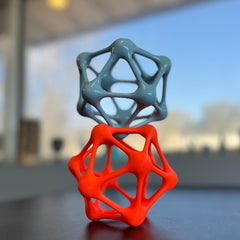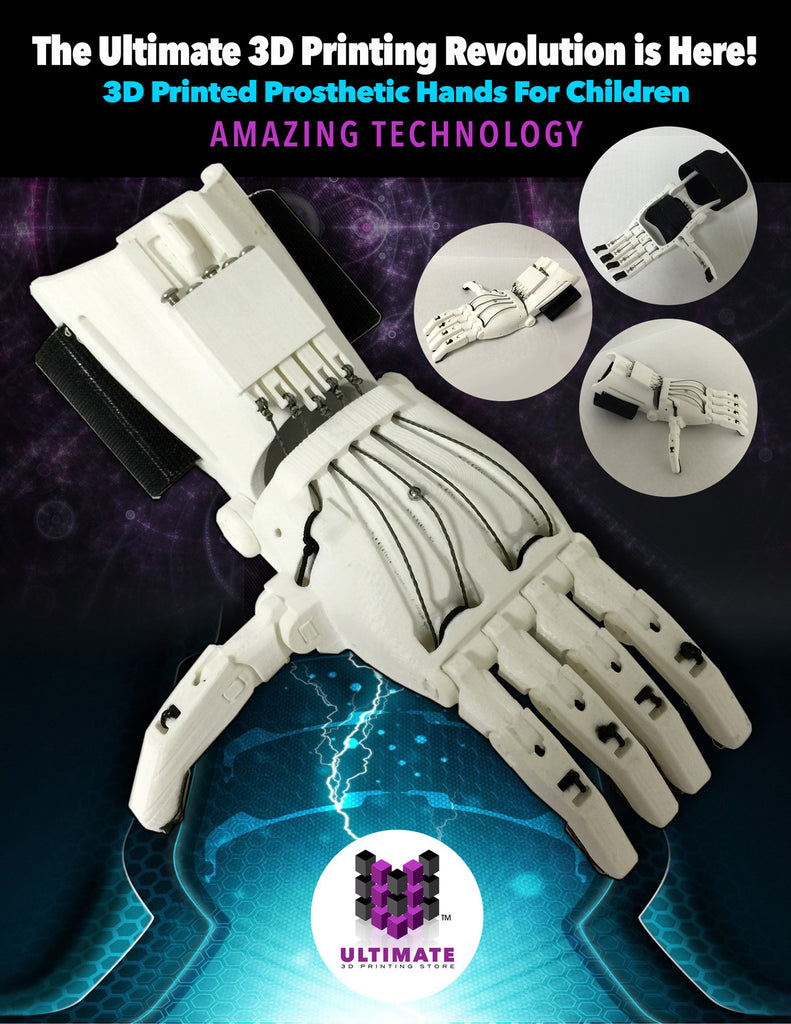News
Filaments - Which Type Should I Use?
Choosing a filament for your next 3D print can be hard, but there's no need for it to be too complicated. Here are some of the tips and tricks I use for choosing the best filament type for my next project.
What Are the Different Types of Filament?
Being that there are over 20 different types of filament in the 3D printing world, it can be overwhelming to narrow down the best types. Below are the top 10 most common examples:
-
PLA (Polylactic Acid): PLA is one of the most popular 3D printing materials due to its ease of use, biodegradability, and low odor. It's derived from renewable resources like corn starch or sugarcane.
-
ABS (Acrylonitrile Butadiene Styrene): ABS is a strong and durable thermoplastic that is more heat-resistant than PLA. It's commonly used in applications that require toughness and impact resistance. However, it emits potentially harmful fumes when melted, so it should be used in a well-ventilated area.
-
PETG (Polyethylene Terephthalate Glycol): PETG is known for its durability, strength, and chemical resistance. It's a good choice for mechanical parts and objects that need to withstand moderate temperatures.
-
TPU (Thermoplastic Polyurethane): TPU is a flexible filament that is resistant to abrasion, oils, and grease. It's commonly used for printing elastic parts, such as phone cases, shoe insoles, and flexible hinges.
-
Nylon: Nylon filaments are strong, durable, and resistant to abrasion. They have good impact strength and flexibility, making them suitable for functional prototypes and mechanical parts.
-
PLA+: PLA+ is a modified version of PLA that offers improved strength, flexibility, and temperature resistance compared to standard PLA.
-
Woodfill, Metal-fill, and other Composite Filaments: These filaments contain a mixture of PLA or other base materials with particles of wood, metal, or other materials. They can produce prints with unique textures and properties, such as wood-like or metallic finishes.
-
ASA (Acrylonitrile Styrene Acrylate): ASA is similar to ABS but offers better UV resistance, making it suitable for outdoor applications.
-
PC (Polycarbonate): PC is a strong and heat-resistant filament that is used for parts that require high impact resistance and temperature resistance.
-
HIPS (High-Impact Polystyrene): HIPS is lightweight and easy to work with. It's commonly used as a support material for printing complex geometries with ABS.
We're gonna be focusing on the top 3 types of filaments because those are the most commonly used in everyday 3D printing, this is your PLA, ABS and PETG filament types.

PLA - the Versatile Filament
This filament is best utilized for prototyping. It is very easy to use, non-toxic, and has relatively low costs. Generally, people use it for creating new concept models and iterating their creative designs. It has a very wide range of colors and textures from silky to matte, and glow-in-the-dark to marble. Great for the fun everyday prints like decorative objects, such as figurines, vases, and sculptures, PLA is gonna be your go-to filament.

ABS - the Strong Filament
Known for its durability and strength, ABS is best suited for printing functional components, such as gears, enclosures, and automotive parts. Because it is able to withstand high temperatures up to 100 degrees Celsius, this filament is highly resistant to impact and high stress environments. People often use this filament for mechanical prototypes that live in those high temp / high stress environments because of all the capabilities it has. This filament can be used as replacements for those gears and other useful parts at a lower cost compared to other metals commonly used. You also have the ability to post process this material to achieve a glossy smooth surface, by using acetone vapor, making it ideal for replacements of aesthetic parts or products.

PETG - the Functional Filament
Somewhat similar to ABS, PETG is yet another extremely durable filament type due to the high tensile strength and waterproof abilities. What also makes it unique compared to other filaments is its flexible capabilities. Often used for printing mechanical parts, brackets and other similar structural components, it can handle moderate loads and temperatures, up to 50-80 degrees Celsius. It is also uniquely chemically resistant and maintains dimensional stability under different temperatures making it ideal for prototypes that may come into contact with liquids or other chemicals. It is naturally transparent which is unlike other filaments, that are often opaque, but it does come in different colors if need be.
In conclusion, the world of 3D printing offers a diverse array of filament materials, each with its own unique properties and applications. From the user-friendly PLA to the robust ABS and the versatile PETG, these filaments cater to a wide range of needs across industries, hobbies, and educational settings.
PLA stands out for its ease of use, making it perfect for prototyping, decorative items, and educational models. ABS, with its durability and post-processing capabilities, finds its place in creating functional parts, mechanical prototypes, and aesthetically pleasing products. Meanwhile, PETG shines in applications requiring strength, chemical resistance, and transparency, making it ideal for mechanical parts, containers, and enclosures.
Whether you're a hobbyist experimenting with designs, an engineer developing prototypes, or an educator inspiring minds, the choice of filament material can significantly impact your 3D printing projects. Understanding the characteristics and applications of PLA, ABS, PETG, and other filament types empowers creators to unleash their creativity and bring their ideas to life in the exciting world of additive manufacturing.


